Introduction
Tangyuan, also known as yuanxiao in some regions, is a beloved Chinese dessert traditionally enjoyed during the Lantern Festival and other festive occasions. These small, round dumplings are typically made from glutinous rice flour and filled with sweet or savory fillings, then boiled in water. However, a lesser-known but equally delightful preparation method involves frying them to achieve a crispy exterior while maintaining a soft, chewy interior. For beginners, frying tangyuan might seem intimidating, but with the right technique and a bit of patience, anyone can master this treat. This guide will walk you through every step, from selecting ingredients to achieving golden-brown perfection, ensuring your first attempt is a resounding success.
Understanding Tangyuan: A Brief Cultural Overview
Before diving into the cooking process, it’s worth understanding the cultural significance of tangyuan. These dumplings symbolize family unity and togetherness, as their round shape mirrors the full moon and represents completeness. While boiling is the most common method, frying offers a unique twist: a contrast of textures that elevates the dish from ordinary to extraordinary. The crispy outer layer, combined with the warm, gooey filling, creates a harmony of flavors and textures that’s hard to resist.
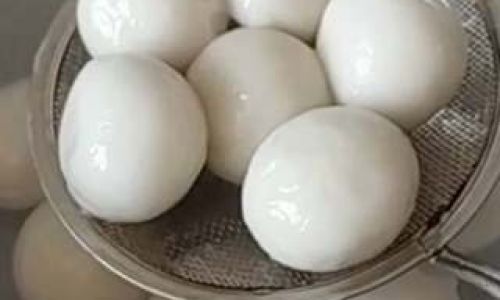
Ingredients and Tools You’ll Need
To fry tangyuan, you’ll require a handful of simple ingredients and basic kitchen tools. Here’s a breakdown:
- Glutinous Rice Flour: The star ingredient, responsible for the chewy texture. Opt for a high-quality brand to ensure the dough is pliable and not gritty.
- Filling: Sweet fillings like black sesame paste, red bean paste, or crushed peanuts mixed with sugar are classic choices. For a savory twist, consider minced meat or vegetable mixtures.
- Water: For kneading the dough. Use room-temperature water to avoid shocking the flour.
- Cooking Oil: Neutral oils like vegetable or canola oil work best for frying, as they have high smoke points and don’t impart strong flavors.
- Optional Toppings: Toasted sesame seeds, powdered sugar, or cinnamon for garnish.
Tools:
- A large mixing bowl
- A wooden spoon or spatula
- A rolling pin (or a clean, empty wine bottle in a pinch)
- A deep, heavy-bottomed pan or wok for frying
- A slotted spoon or spider strainer
- Paper towels for draining excess oil
Step-by-Step Preparation
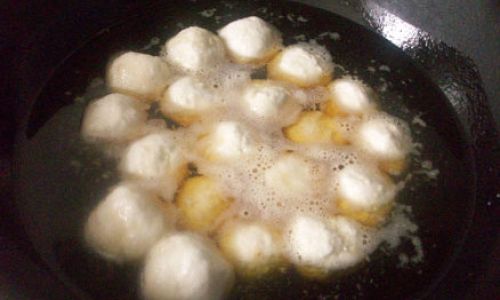
Making the Dough
The foundation of great tangyuan lies in the dough. Follow these steps carefully:
- Measure the Flour: Start with 200 grams of glutinous rice flour. This quantity yields approximately 12–15 medium-sized dumplings.
- Add Water Gradually: Slowly pour 150–160 milliliters of water into the flour while stirring with a wooden spoon. The goal is to create a soft, smooth dough that’s neither too sticky nor too dry. If the dough feels crumbly, add a teaspoon of water at a time. If it sticks to your hands, sprinkle in a bit more flour.
- Knead Thoroughly: Transfer the dough to a lightly floured surface and knead for 5–7 minutes until it becomes elastic and stretchy. This step develops the gluten in the flour, ensuring the tangyuan hold their shape during frying.
- Rest the Dough: Cover the dough with a damp cloth and let it rest for 10–15 minutes. This relaxes the gluten, making it easier to shape.
Preparing the Filling
While the dough rests, prepare your filling. For simplicity, we’ll focus on a sweet black sesame filling:
- Toast Sesame Seeds: In a dry pan over low heat, toast 50 grams of black sesame seeds until fragrant (2–3 minutes). Stir constantly to prevent burning.
- Grind the Seeds: Use a mortar and pestle or a food processor to grind the toasted seeds into a coarse powder.
- Mix with Sugar and Fat: Combine the ground sesame with 50 grams of powdered sugar and 30 grams of melted butter or coconut oil. The fat helps bind the filling and adds richness.
- Chill: Place the mixture in the refrigerator for 15 minutes to firm up, making it easier to handle.
Shaping the Tangyuan
Shaping requires precision to prevent the filling from leaking during frying:

- Portion the Dough: Divide the dough into 12–15 equal pieces, each about the size of a ping-pong ball. Roll each piece into a smooth ball.
- Flatten Each Piece: Use your thumb to create a deep indentation in the center of a dough ball. Gently stretch the dough to form a small cup, ensuring the sides are thin but not translucent.
- Add the Filling: Place a teaspoon of chilled filling into the indentation. Be careful not to overfill, as this can cause the dough to tear.
- Seal the Dumpling: Pinch the dough together at the top to seal the filling inside. Roll the sealed dumpling between your palms to smooth out any seams.
- Optional: Coat in Sesame Seeds: For added crunch, roll the shaped tangyuan in a bowl of toasted white sesame seeds, pressing gently to adhere.
Frying the Tangyuan
This is the most critical step, as achieving the perfect crispiness requires careful temperature control:
- Heat the Oil: Pour 500 milliliters of oil into a deep pan or wok. Heat over medium heat until the oil reaches 160–170°C (320–340°F). Use a kitchen thermometer for accuracy. If you don’t have one, test the oil by dropping a small piece of dough into it—if it sizzles gently and floats to the surface within 5 seconds, the oil is ready.
- Fry in Batches: Gently lower 4–5 tangyuan into the oil using a slotted spoon. Avoid overcrowding the pan, as this lowers the oil temperature and results in greasy dumplings.
- Monitor the Temperature: Adjust the heat as needed to maintain a steady temperature. If the oil gets too hot, the tangyuan may brown too quickly on the outside while remaining raw inside.
- Fry Until Golden: Cook the tangyuan for 4–5 minutes, turning them occasionally with the slotted spoon to ensure even browning. They’re done when they puff up slightly and turn a deep golden brown.
- Drain Excess Oil: Transfer the fried tangyuan to a plate lined with paper towels to absorb any excess oil. Let them cool for 2–3 minutes before serving.
Tips for Beginners
- Test the Dough Consistency: If the dough cracks while shaping, it’s too dry. Add a few drops of water and knead again. If it sticks to your hands, dust with more flour.
- Chill the Filling: A cold filling is easier to work with and less likely to ooze out during frying.
- Use a Splatter Screen: Frying can cause oil splatters. A splatter screen or lid placed partially over the pan minimizes mess.
- Don’t Rush the Frying: Low and slow heat ensures the dough cooks through without burning.
- Serve Immediately: Fried tangyuan are best enjoyed fresh, as they lose their crispiness over time.
Common Mistakes to Avoid
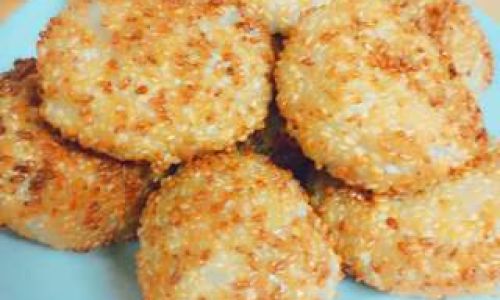
- Overfilling the Dumplings: This leads to leaks and burst tangyuan. Stick to 1 teaspoon of filling per dumpling.
- Skipping the Dough Rest: Resting allows the gluten to relax, making the dough easier to shape.
- Using High Heat: Frying at too high a temperature chars the exterior while leaving the inside raw.
- Neglecting Oil Temperature: Fluctuations in heat result in uneven cooking. Invest in a thermometer for consistency.
Variations and Serving Ideas
- Savory Tangyuan: Replace sweet fillings with seasoned minced pork, mushrooms, or bamboo shoots. Serve with a dipping sauce of soy sauce, vinegar, and chili oil.
- Colorful Dough: Add natural dyes like beetroot juice (pink) or spinach puree (green) to the dough for a vibrant twist.
- Dessert Platter: Pair fried tangyuan with fresh fruit, a scoop of ice cream, or a drizzle of chocolate sauce for an indulgent treat.
- Gift-Worthy Treats: Package cooled tangyuan in decorative boxes for a homemade gift that’s sure to impress.
Troubleshooting Guide
- Tangyuan Burst During Frying: The dough was too thin, or the filling was too hot. Next time, use thicker dough and ensure the filling is chilled.
- Oily Texture: The oil temperature was too low, causing the dumplings to absorb excess fat. Maintain a steady 160–170°C.
- Dough Tear While Shaping: The dough was either too dry or not rested long enough. Adjust the dough’s hydration and rest time.
Conclusion
Frying tangyuan is a rewarding culinary adventure that transforms a traditional treat into a crispy, golden delight. While the process requires attention to detail, the results are well worth the effort. With practice, you’ll refine your technique, experiment with fillings, and even develop your own signature recipes. Whether served as a festive dessert or a cozy weekend snack, fried tangyuan is a testament to the joy of cooking—and eating—something truly special. So, roll up your sleeves, heat that oil, and embark on a journey to master this timeless dish. Your taste buds (and your lucky guests) will thank you!

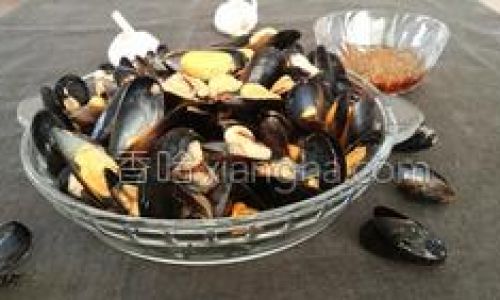
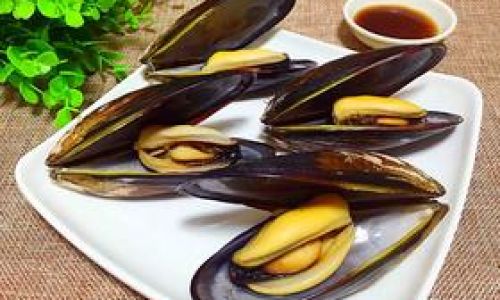
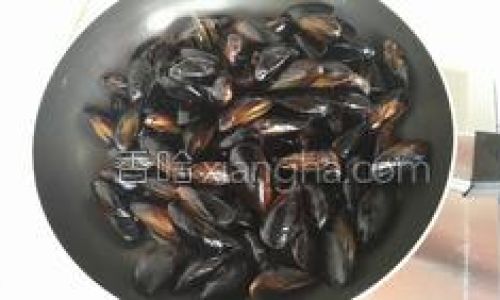
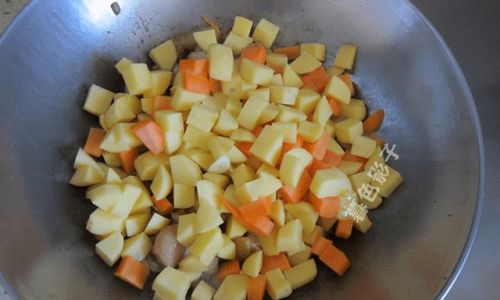

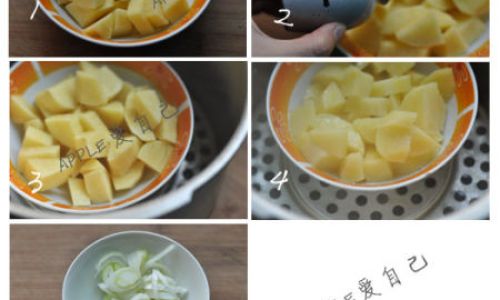
0 comments